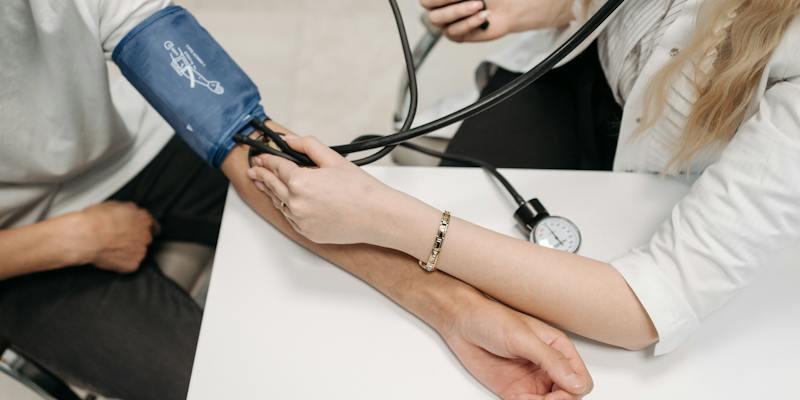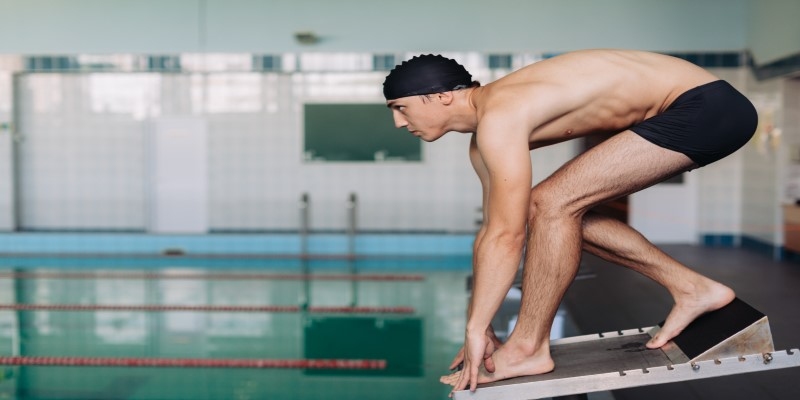Stretching lowers blood pressure, according to several research. In one study, 30 minutes of stretching five days a week improved blood pressure control more than a 30-minute walk. Over two months, regular stretching improved blood pressure more than fast walking, contradicting the idea that aerobic workouts regulate hypertension. Stretching's physiological effects on vascular health have spurred study. These results have major implications for hypertensives seeking broad and effective therapy alternatives.
So, why is stretching so effective for blood pressure? Muscles and blood vessels, especially arteries, lengthen. Stretching exercises lengthen muscles, which impacts artery walls. Stretching increases artery flexibility, which may reduce blood flow resistance as arteries regulate blood pressure.
Consistent arterial wall stretching improves flexibility and more. It reduces blood flow resistance, decreasing blood pressure gradually. Maintaining an adequate blood pressure level is vital for hypertensives' cardiovascular health.
Lower back stretchers, however less intensive than brisk walking, are a better cardiovascular workout for hypertensives. Stretching benefits a holistic hypertension management approach since it targets vascular flexibility. Stretching enhances aerobic exercise, strength training, and a healthy lifestyle.
Managing hypertension with stretching offers a unique and sophisticated approach to cardiovascular health. For those who struggle with high-intensity workouts, it addresses blood vessel demands and blood pressure management in a less demanding yet effective way. Stretching improves blood pressure regulation over time by increasing artery wall flexibility.
Other Health Benefits of Stretching

Beyond its benefits of growing flexibility and reducing stiffness, stretching is an exceptionally useful and adaptable part of physical exercise. Stretching is crucial to your health in many other aspects, including cardiovascular and musculoskeletal benefits.
Bodily Fitness
Regular stretching is a critical and comprehensive strategy for bodily fitness, but it is no longer the most effective because of its benefits on cardiovascular health. Flexibility and range of movement are the primary blessings of stretching. Joints and muscular tissues can flow more freely and efficiently over their complete range of movement when flexibility is more desirable via normal stretching activities. This increased range of lower back stretchers enables regular tasks and is critical for injury prevention.
Flexibility
Greater adaptability has far-reaching positive effects. A more flexible body makes it easier and more efficient to accomplish things like tying shoelaces, reaching for items on high shelves, and engaging in sports and other leisure activities. As people become older, their flexibility naturally decreases. Thus, this might be very helpful for them. By stretching regularly, you can slow this deterioration and encourage yourself to live more independently.
Injury Prevention
Stretching is essential for injury prevention and preparing the muscles and cardiovascular system for strenuous physical activity. Additionally, stretching is a crucial component of the post-workout routine as it helps with muscle healing and repair. Achy or tight muscles are a common side effect of doing out. It is helpful to stretch while cooling down to ease this pain so more circulation can circulate to the muscles and waste items may be more easily removed. In addition to helping you recover faster, this will make you feel better after your workout.
A person's mental health can also benefit from stretching, in addition to their physical health. Relaxation and reduced stress can be achieved via mindful stretching, which allows one to concentrate on one's body and breath.
Morning Stretches and High Blood Pressure Management

Adding a complete stretching program to your workout may boost flexibility, muscular function, and well-being. Here are four muscle-group-targeted lower back pain stretches that can improve blood pressure:
Quadriceps Stretch
Start with your left side toward the wall. Raise your right heel to your hips and grip your foot with your right hand. Hold your left hand against the wall for stability. Press your ankle to your hips and look straight ahead to stay upright. Release this stretch after a few seconds and repeat on the other side. This stretch targets the quadriceps and the front thigh muscles to relieve tension and increase flexibility.
Hamstring Stretch
Stand tall with your left heel on the floor in front. Staying upright, bend forward from your buttocks and press your hip back. Right hand to toes, feeling stretch along back of leg. Keep the posture for a few seconds to ensure perfect alignment, then rise. This hamstring stretch improves posture and flexibility.
Calf Stretch
Beginning these lower back pain stretchers, bend one leg and place the foot before you. Extended the second leg behind with a modest knee bend. Point both toes forward. Moving your hips forward slowly with your foot flat on the floor, weight in your rear heel. Stretching the calf muscles the right way increases flexibility and alleviates stress. Wait 20–30 seconds before returning to the start. Stretch the other leg and alternate.
Seated March
Sit straight on a chair with your feet flat on the floor to start this stretch. Return to the beginning position after raising one knee as high as comfortable. Perform this on the opposite leg. At least 16 repetitions with both legs; repeat after one set. The sitting march stretches hip flexors and thighs, improving lower body mobility.
Stretching the Triceps
Bring your right hand down your back while bending your elbow and raising your right arm above. Push softly on your right elbow with your left hand. This stretch works out the shoulder and triceps muscles. Reverse the position after 15 to 30 seconds. If you want to loosen up your upper body and improve your shoulder mobility, try extending your triceps.
Hip Flexor
Start by bringing your right foot forward into a lunge stance. Gently bring your left hip down until you feel a stretch. Reverse the position after 15 to 30 seconds. People who don't move around often could benefit from this back stretcher since it increases flexibility in their lower bodies.







